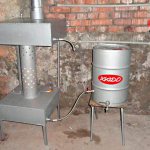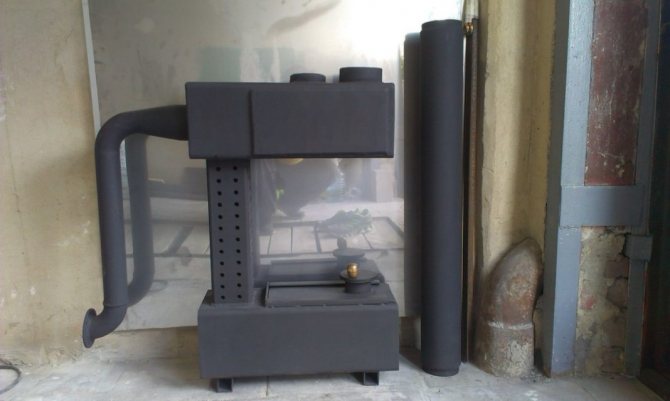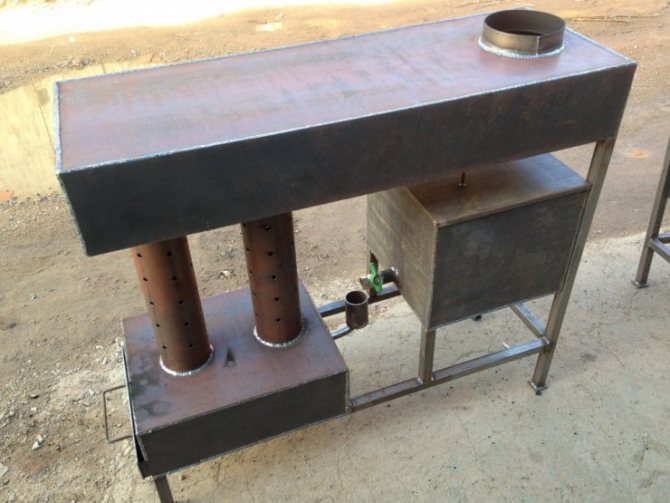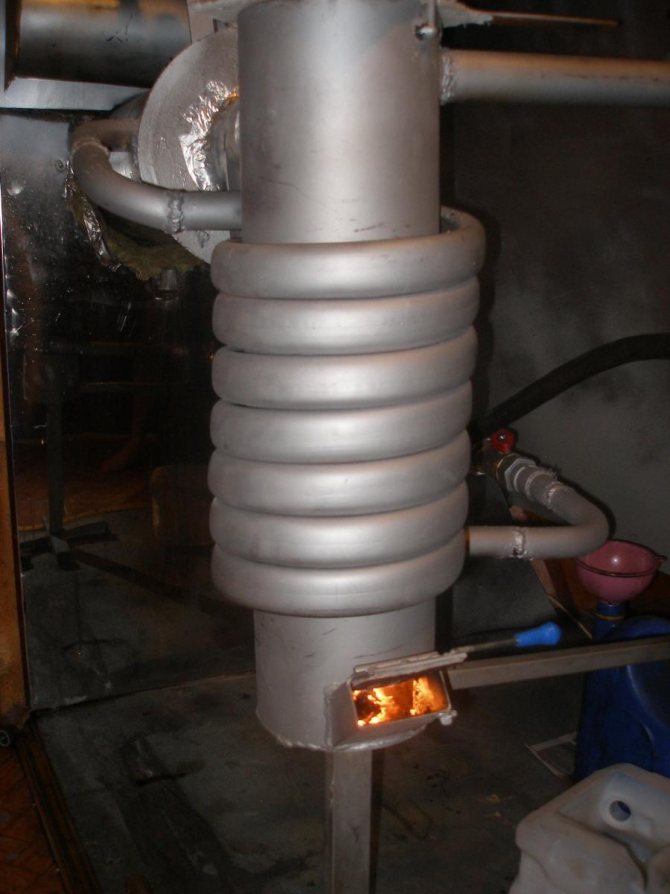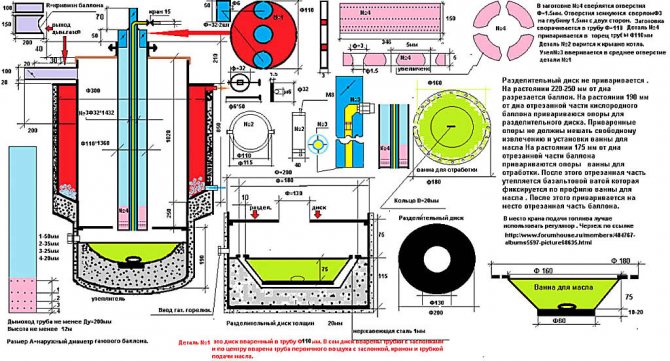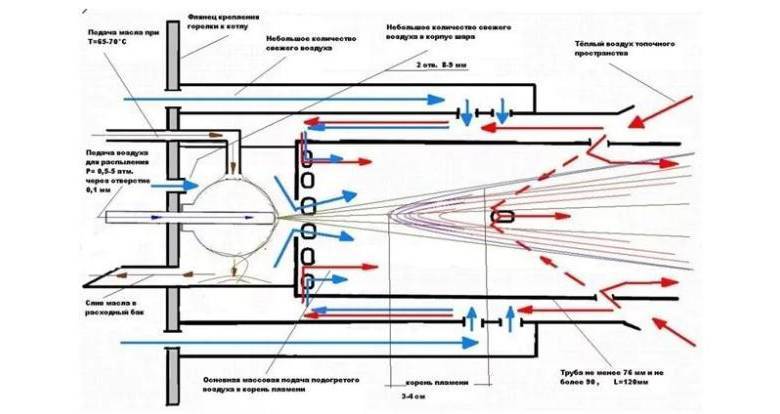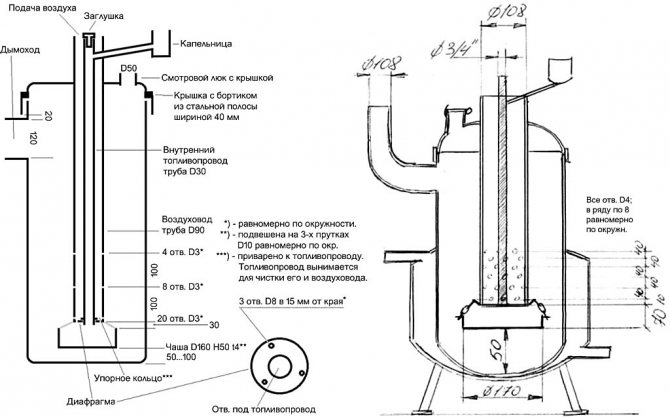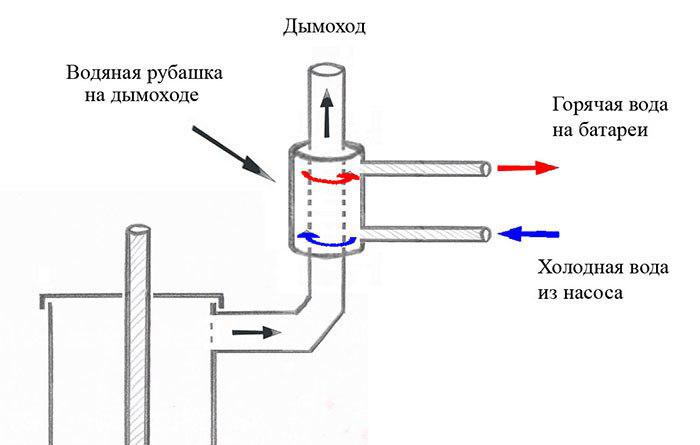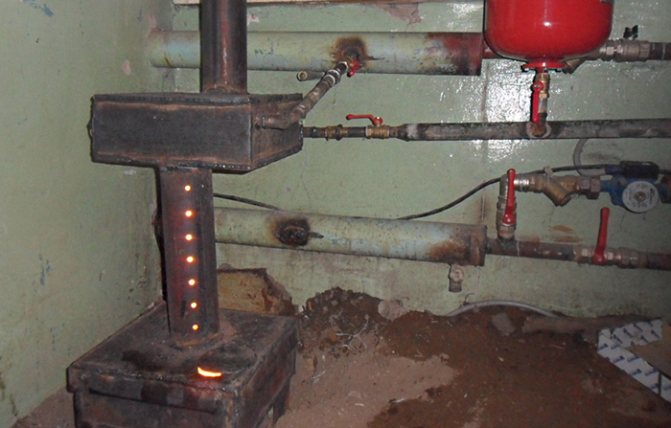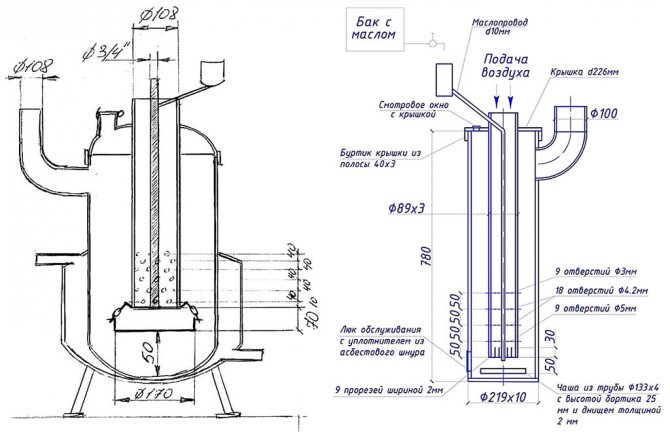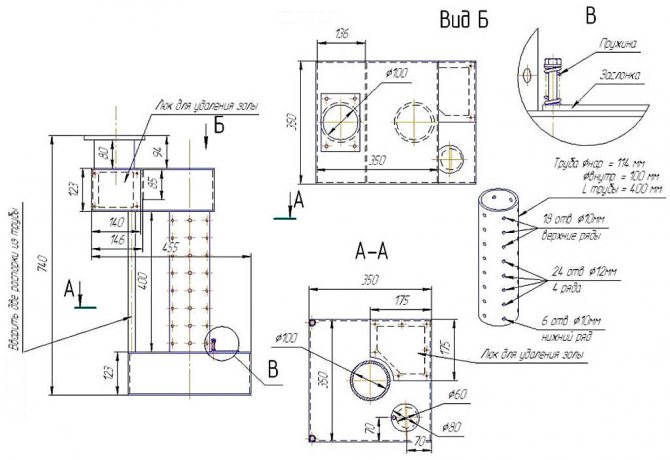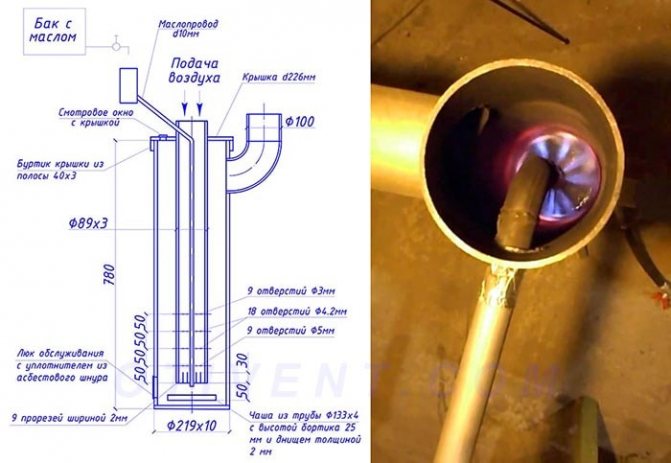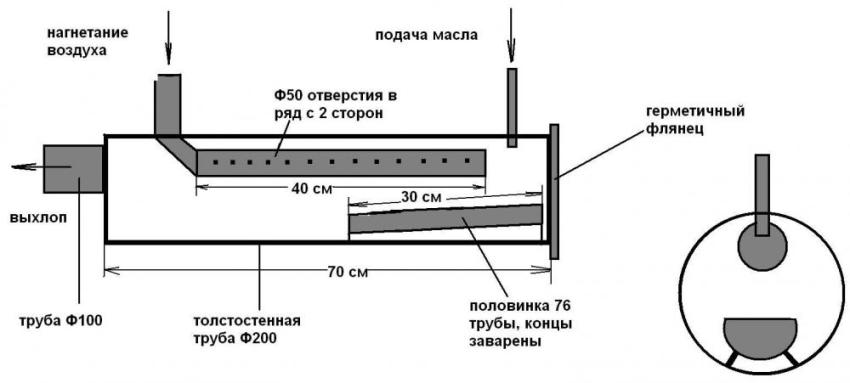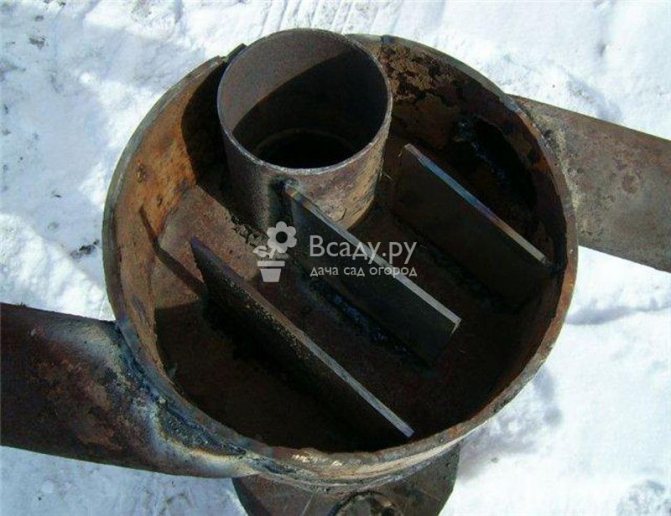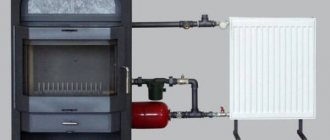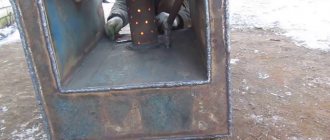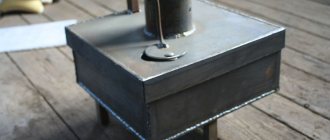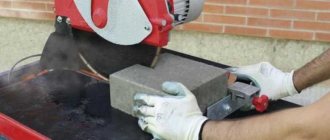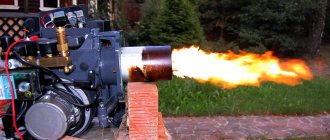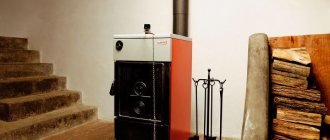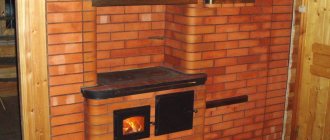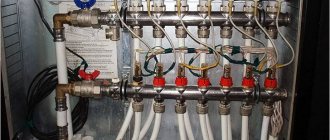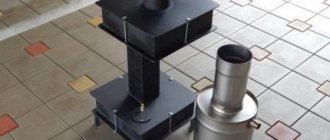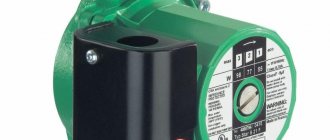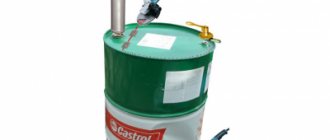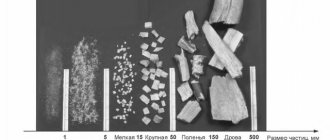close ×
Creating a comfortable temperature in your home is the most important task in regions with harsh climates. If in the south it takes only a couple of months to heat a dwelling without consuming much fuel, then in the northern regions the heating systems work without stopping for more than six months. It can be too costly to heat farm buildings and country houses with wood or electricity, which forces people to look for alternative heating methods. A mining furnace with a water circuit can provide heat to sufficiently large areas. The craftsmen not only make their own ovens, according to the instructions, but also make their own design adjustments, bringing the system to the ideal.
Working off is an inexpensive and affordable heating material. Such oil can be found in car services - it is replaced in the car every two years, but keep in mind that it will require cleaning before use.
Features of the furnace for working out
Furnaces, boilers for mining are most often installed in places where there is an abundance of used engine oil: in garages, car services, on farms with their own fleet of vehicles. The process of disposal of used oil is not easy, since it cannot be discharged into the ground or sewage system. Using it as fuel, you can solve the problem.
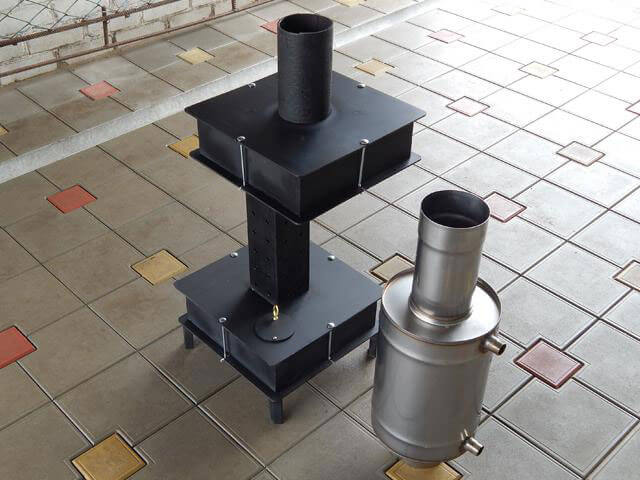
If you put an ordinary potbelly stove for this purpose, it will warm up the air rather quickly, but as soon as the burning of the fuel stops, it will immediately become cold. Therefore, it is not possible to steadily heat a garage or workshop in this way. If you make a working furnace with a water jacket, then the energy efficiency of the heating unit will increase significantly.
Work specifics
The hot water boiler is located at the top of the stove. It is non-removable, has taps for taking water in the bath and for starting the heating circuit. The steam room is heated from a brick wall extending inside. In order for the effect to be maximized, it is necessary to make the distance from the stove to the brick box rather small to reduce heat loss, but also sufficient for air penetration. In fact, it is necessary to build a structure that resembles a long-burning brick furnace with your own hands, only the furnace compartment replaces the metal furnace for mining. In this case, the creation of a powerful separate foundation is not required, which greatly facilitates the process of building a bath.
There is another option for manufacturing a structure on mining, combined with a brick oven. Only the bottom tank is being manufactured. The combustion chamber has the shape of a knee, smoothly bent at 90 °. A vertical plate is welded to the end, which will communicate with the inner (furnace) part of a conventional brick oven. The incandescent gases formed during the combustion of the mining enter the inside of the brick stove and heat it up.
The further design is no different from the usual one: a boiler for water is installed, a heating circuit with natural or forced circulation is connected, shut-off valves, and so on. Such a compact version is optimal for those who already have a ready-made furnace and only want to adapt it for burning waste
Brick kilns with a ready-made water circuit are more stable heat sources that maintain their temperature for a long time, which is important when the cold winter sets in.
How the oven works and works
The design of a working furnace with a water circuit is not complicated: two chambers, which are connected by a perforated metal pipe.The lower chamber is equipped with a special container where the fuel is located (mining). It can enter the waste oil boiler with a water circuit in an automated way or manually. The stove is ignited with a small amount of gasoline, which is poured onto the oil from above. Gasoline starts to burn, the oil underneath heats up, starts to boil. Oil vapors enriched with oxygen in the perforated pipe begin to actively burn in the pipe and the upper chamber. At the same time, the temperature in the lower chamber is 350 degrees, and at the top it reaches 900.
If the furnace has a manual supply of fuel, in the lower chamber the filling and ignition takes place through a special hole at the bottom of the chamber. With an automated fuel system, a branch pipe leads to the chamber, which is connected to a container filled with used oil.
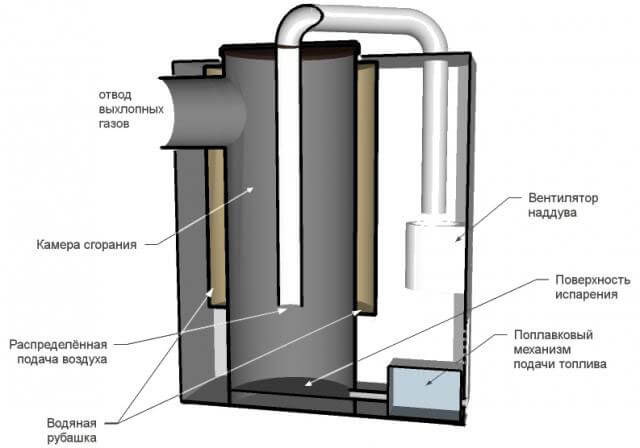

The lower chamber must be additionally equipped with a special opening with a damper so that the draft and combustion temperature can be controlled. To organize the water circuit above the upper chamber or around the chimney channel, a tank is installed with welded fittings for the supply and output of the coolant.
Important. To control the temperature and pressure of the coolant, a pressure gauge and a thermometer must be installed on the heating unit.
Stove burner
In conclusion, let us recall one more method of rather effective drip combustion of mining. This is a water / oil burner. Once these were widely used by builders and road builders to heat up bitumen boilers, but now it is practically out of use because a water-oil burner is bad in itself: it is gluttonous, smokes a lot. However, if it is attached to the furnace door of any furnace (air enters through the blower), then in the hot furnace space the oil vapors will burn out perfectly and the water-oil drip furnace will show a very good efficiency.
The device of a water-oil burner is not difficult: fuel and water simultaneously drip into a hot bowl, above which there is a stream of air. The water droplets explode as if on a hot frying pan and spray the oil into the mist. The fuel vapors by the air flow (stove draft or pressurization) go through the bell to the furnace firebox, where they are burned. The difficulty in this case is the need to adjust 2 drops, fuel and water, but structurally, a water-oil burner is simpler than any of the furnaces described above, except for the wick one. But its efficiency in combination with a stove-potbelly stove is not worse than that of stoves with a fiery bowl. How to make a water-oil burner for a stove with your own hands, see the video at last:
Below you can share your thoughts and results with our readers and regular visitors.
You can also ask questions to the author *, he will try to answer them.
The advantages of such a furnace, and what disadvantages need to be considered
Waste oil furnaces with a water circuit help out in many cases and have their advantages:
- it is a universal heating unit, which is ideal for utility rooms, greenhouses, home workshops, garages;
- the construction of the furnace is inexpensive (it can be collected from scrap metal);
- very quickly heats up the room in any frost;
- compact design;
- can be adapted for heating and cooking;
- allows you to dispose of mining.
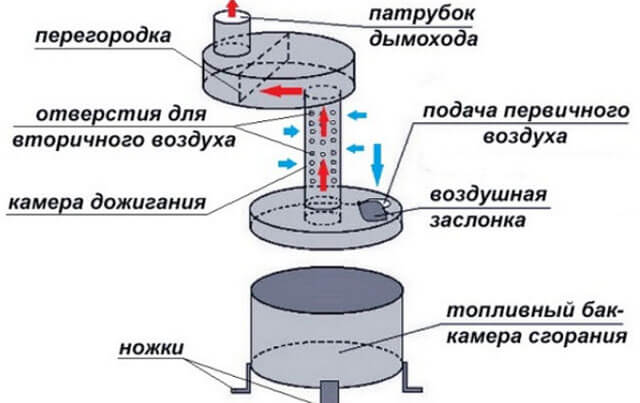

But there are also disadvantages that need to be borne in mind when operating the oven:
- demanding for regular cleaning of the chimney and combustion chambers, since during operation it is intensively covered with soot;
- works "loudly", when the fuel is actively burning, it emits a hum;
- you need a container and a place for storing used oil (it will freeze on the street at subzero temperatures);
- the furnace is fire hazardous, since the body is heated to very high temperatures and the requirements for installation and operation must be strictly observed.
But all these disadvantages are not significant compared to fuel economy, especially if the used engine oil is obtained free of charge. If all the requirements are met, the oven will serve for a long time and safely.
Oil ovens with a water circuit can have any configuration and size, it depends on what materials the home master has, and on what power of the unit is planned to be obtained.
Most important design features
First of all, the surface on which the stove is installed must be strictly horizontal so that the oil in the tank is evenly distributed.
For the manufacture of the device, you need to choose only high-quality and heat-resistant materials. For the chimney, steel with a thickness of at least 3 mm is used. Its outer part can be made of galvanized or asbestos-cement pipes. The inner diameter of the smoke ducts must be at least 10 cm.
At the exit from the furnace, a small section of the pipe is set at an angle of 30 °, and then it must go strictly vertically. For the tank, metal with a thickness of 3 mm or more is used. The diameter of the holes in the connecting pipe is selected so that it is equal to about a tenth of the diameter of the chimney.
It is important to provide a damper in the lower tank, which will allow you to regulate the strength of the flame.
What are the requirements for fuel
Any oil that has worked out its resource is suitable as a fuel: industrial, transmission and motor oil.
There are certain precautionary requirements that you need to be aware of before starting to operate the unit:
- mining should not contain impurities, even insignificant ones, as this can provoke an explosion of the heating unit;
- a fire can be caused by ordinary water entering the oil, which boils much faster than oil, splashes can ignite.
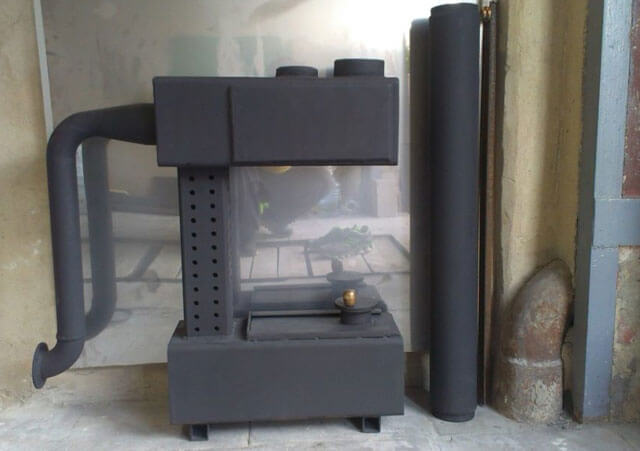

Important. Before pouring the mining into the fuel tank, it must be filtered. Other flammable liquids must not be used as fuel. Gasoline for ignition is taken in very small quantities.
Installation and test ignition
The place for installing the stove should be chosen as far as possible from objects and materials that are sensitive to heat. The device gets really hot. If not handled carefully, it can damage property and even cause a serious fire.
There must be a non-flammable base under the device. You should not put such a device in places of active movement of air currents. Drafts can cause flames to escape, which is dangerous. The stove, ready and installed in a suitable place, is connected to a vertical chimney.
Then a test ignition is performed. For this, oil is poured into the fuel container, and about 100 ml of liquid for fireplaces or other similar composition is added from above. At first, this liquid will burn, but soon the oil will boil, the device will begin to make noise. This means that the stove is made correctly, it can be used for its intended purpose.
All welding work must be done carefully, a tight and even seam is required for the device to be safe and easy to clean
Before pouring the oil into the tank, you need to settle for some time so that unnecessary impurities settle down and do not get inside. The container should be filled only two-thirds, then the process of primary combustion will be more efficient and safe.
From time to time it is necessary to clean the inside of the fuel tank from accumulated dirt. The lid is removed and the remaining oil is simply drained off, deposits, etc. From time to time, you need to tap the perforated pipe and chimney to remove the collected soot and soot.
It is required that the stove is in an empty room, near which there should be no flammable surfaces.Particular attention is paid to self-made devices. They should not be placed on a shelf or other support that could catch fire.
We suggest that you familiarize yourself with: How to bring a pipe in a bath through the wall
A homemade furnace for mining should be located on a flat base, which can be concrete or brick. It is necessary that the distance between the apparatus and the wall is at least 1 m. For the formation of good draft, the chimney must have a length of more than 4 m. On the outside, insulation should be provided to prevent the formation of acid condensate.
The used oil must be free from solvents or other flammable elements and must therefore be kept away from the oven. It is also unacceptable for moisture to enter a container with oil. This will cause a fire in the oven. In an emergency, a fire extinguisher should be used to extinguish the fire.
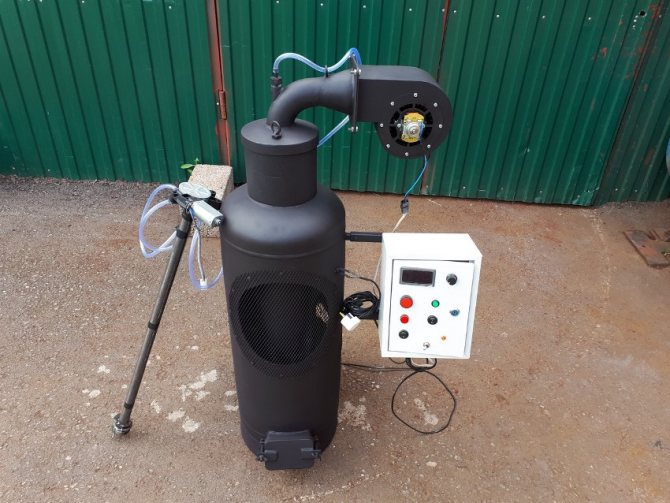

The principle of operation of the stove with a drip feed of fuel is similar to the mechanism of operation of diesel engines
Before starting work, oil is poured into a container in an amount equal to half the volume of the tank, which will provide the necessary space for the formation of vapors. It is necessary to wait a while for the vapors to be enriched with oxygen. Then the fuel is ignited using long matches. As soon as the process of ignition of vapors begins, the damper is half closed.
To increase the efficiency of the mini-furnace during mining, it is possible to install a sealed tank with liquid above its upper chamber. To supply and drain water, fittings are attached to it, which are located at different levels. Another option for increasing productivity is the necessary air convection, which is carried out using a fan located near the upper chamber. Taking warm air from the stove, it helps to cool it, which has a positive effect on the service life of the device.
What ovens can you build yourself according to the drawings
A waste oil stove with a water circuit can have a different design:
- The oven is round, welded from sheet steel. The fuel tank is combined with the combustion chamber. The afterburner is a perforated pipe and an upper chamber equipped with a dividing wall that splits the flame. A hole is cut out in the cover of the lower chamber, where the mining is poured, and air will also enter there. The principle is as follows: the wider the damper is open, the better the oil will burn.
- Oven from two barrels. In one (bottom) there is a fuel tank, there is an opening for its loading. The upper combustion chamber consists of a pipe that passes through an upper barrel filled with water. It has fittings for supplying heating water. Externally, the model is very similar to a samovar. Its body gets hot enough, so you need to handle the stove carefully. Install such a "samovar" only in those rooms where accidental contact with the body of people or animals is excluded. This design has a big plus: a large tank serves as a heat accumulator.
- A compact mini-oven made of a square shaped tube 18x18 cm and 10x10 cm. Simple in design, it is very easy and quick to assemble. You can cook food on it.
- Practical model of a mining boiler with a water circuit from a gas cylinder with a cut off top. Here you can envisage an automated feed of working off. The oil line is located in the combustion chamber. The water circuit looks like a boiler through which the chimney is passed. Or it can be a copper heat exchanger coil, which is wrapped around the furnace body.
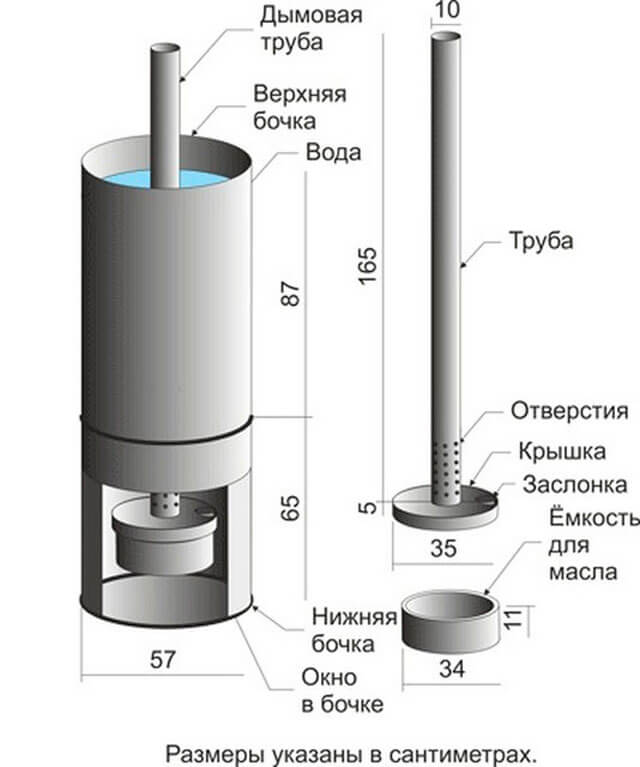

Sizes may vary. But the location of the main nodes is unchanged.
Manufacturing of a pallet for working off
The pallet was made from a cast iron car brake disc. Cast iron has good heat resistance, so I decided to take it.
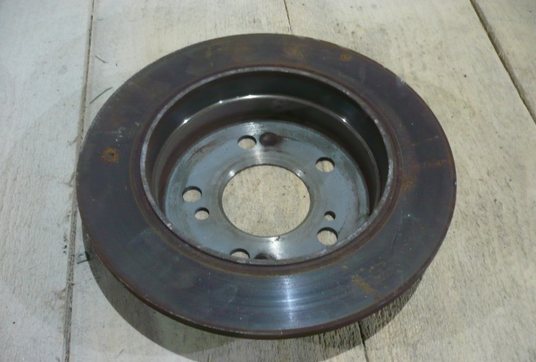

From this disk I will make a pallet
At the bottom I welded the bottom.
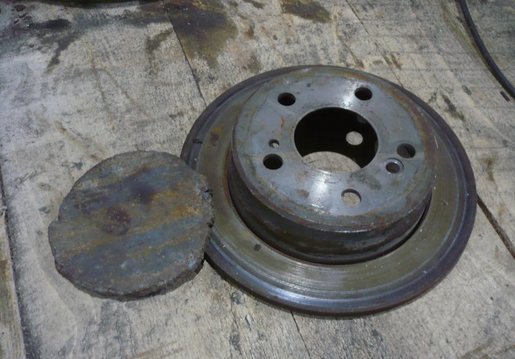

The steel circle is the bottom
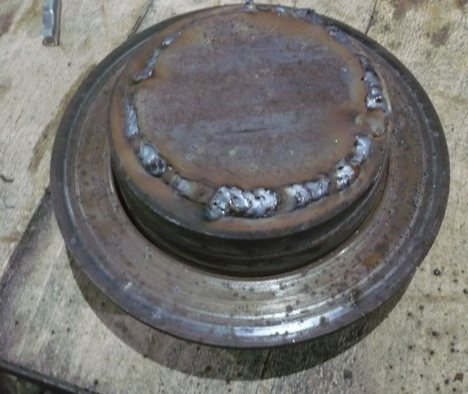

Welded the bottom
I welded the lid on top. In it you can see the counterpart of the burner and the opening. Air enters the stove through the opening. I made it wide - it's better this way. With a narrow opening, the air draft may not be strong enough to prevent oil from entering the sump.
Then I made a clutch. She connects the pallet and the burner in my stove. With the clutch, it will be much easier to service the stove. If necessary, I can take out the drip tray and clean the bottom of the burner.
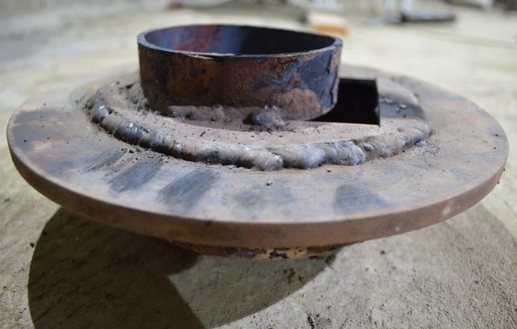

Then I made a clutch
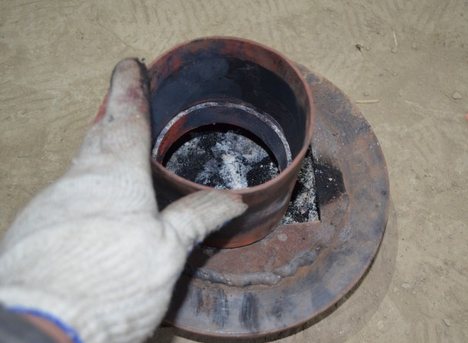

Clutch
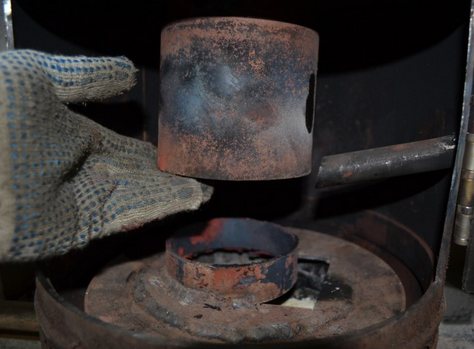

I put the clutch in place
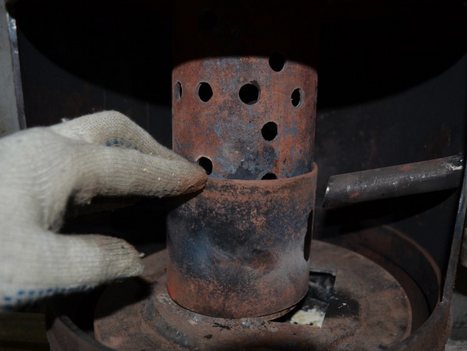

I put the clutch in place
The sleeve was made from a 10-centimeter pipe, simply by cutting it along the longitudinal edge. I did not weld the opening in the coupling - there is no need for this.
How to make a waste oil oven: step by step instructions
The most common model of a working furnace is made from pipe sections with a diameter of 352 mm, steel sheets 4 mm and 6 mm thick. You need to prepare a small piece of thick-walled pipe with a diameter of 100 mm and a metal steel angle for the supports. Such a model will cope with heating an area of 80 square meters. meters.
Tools that you need for work:
- welding equipment;
- grinder with a wheel for cutting metals and a grinding disc;
- drill;
- roulette.
You also need to purchase heat-resistant paint and solvent.
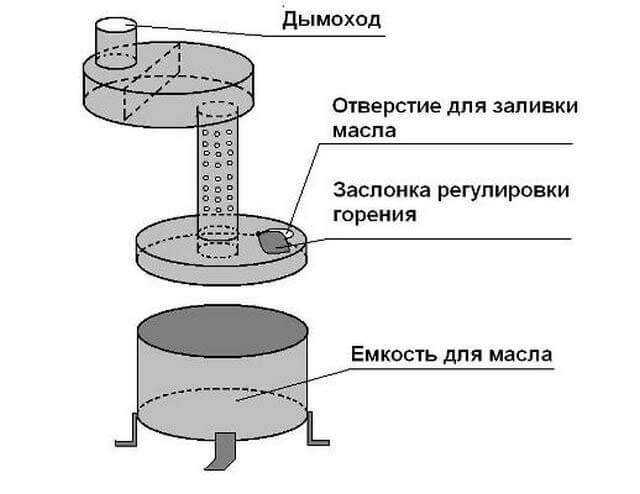

Stages of manufacturing a working furnace with a water circuit according to the drawings:
- The necessary parts are cut out, burrs are removed at the cut points;
- The bottom tank is welded from a pipe 115 mm high and 344 mm in diameter. The bottom is made of steel sheet. The legs can be welded from a metal corner or from pipe scraps.
- A piece of pipe with a diameter of 100 mm and a height of 360 mm is perforated.
- Put together, by welding, the bottom tank lid: a pipe with a diameter of 352 mm, a height of 60 mm, a lid with two holes and a pipe with perforations. The damper on the air supply hole is fastened with rivets.
- Parts of the upper compartment are welded from a pipe with a diameter of 352 mm and a height of 100 mm. The bottom is welded from a steel sheet, in which a hole for a perforated pipe is provided.
- A chimney with a diameter of 100 mm and a height of 130 mm is welded. On the inside of the lid, closer to the chimney, a steel sheet partition is attached.
- The upper chamber is welded to the lid on which the chimney is installed. The upper chamber is connected to a perforated pipe. You can strengthen the structure by pulling it down with an iron bar.
- The upper boiler compartment is tightly put on the lower one.
- In order to increase the service life of the unit, it is painted with heat-resistant silicone paint. Before applying paint, the metal is cleaned of rust, the seams after welding - from scale.
- Install a stove, connect it to the chimney.
Important. The chimney of a welded stove for mining with a water circuit must be straight, at least four meters long and without bends.
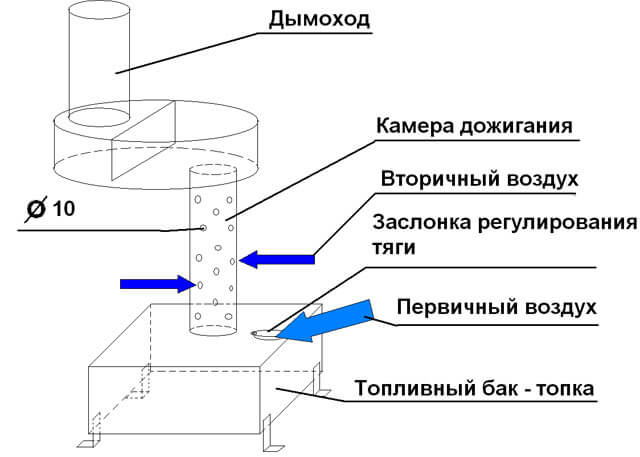

By the same principle, you can make a rectangular oven.
Burner device
A pipe with a diameter of 100 mm with a wall thickness of 4 mm and a length of 200 mm (1). In the lower part, holes are drilled with a diameter of 18-20 mm (2). All burrs on the inside of the pipe are carefully removed. If they are not removed, soot and soot settling on them will narrow the inner diameter of the burner.
The diaphragm separator is put on the pipe and welded exactly in the middle (3). Then it is installed inside the stove and welded to the inside of the cylinder along the entire perimeter (4). It is advisable to weld the separator in the lower part of the partition, this will create a sufficient height of the side so that in the absence of used oil it is possible to switch to solid fuel pellets.
Connecting the water circuit to the furnace
The water circuit is connected to the upper chamber. You can weld the water container directly to the surface of the stove, but it is better to make a separate structure so that when the bottom burns out, water does not enter the combustion chamber.This will cause the oil to splash and ignite.
The tank can be made in any size. For maximum heating, it should fit snugly against the upper chamber and flue gas vent. The fittings for the coolant supply and return are welded to the tank.
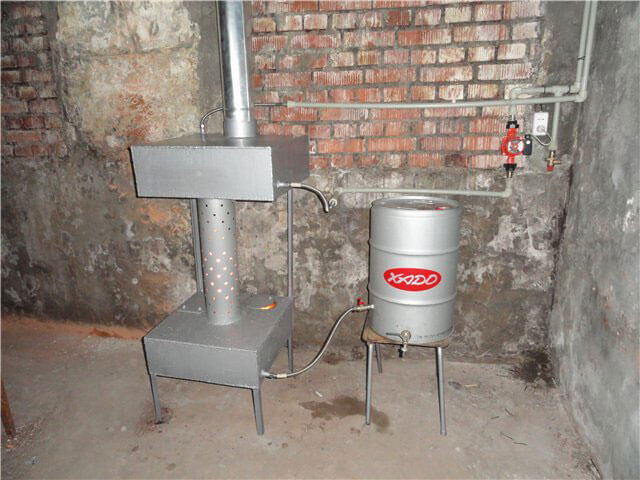

Be sure to attach a thermometer and a pressure gauge. The pump and expansion tank are installed on the return line, closer to the boiler.
Manufacturing of the case
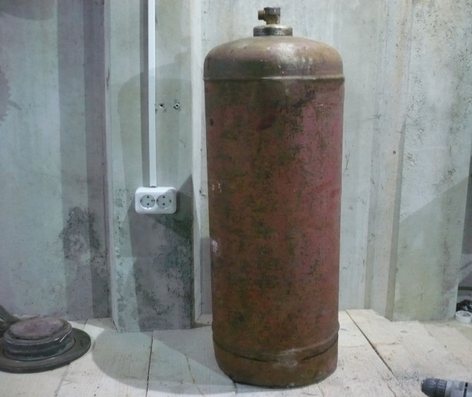

I will make a stove from this balloon
I used a used cylinder. There was no gas in it, but just in case, I opened the valve and left the cylinder on the street overnight.
Then I carefully and slowly drilled a hole in the bottom of the cylinder. To prevent sparks from appearing, I pre-moistened the drill with oil
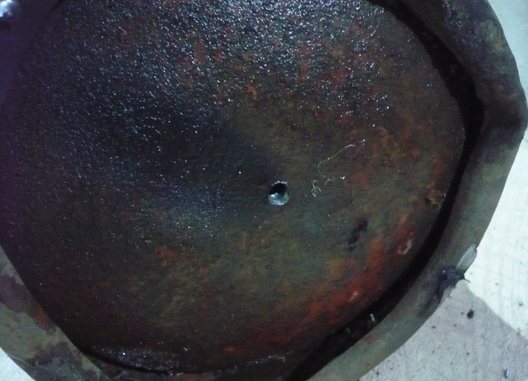

Hole
Then I filled the bottle with water and drained it - this removed the remaining gas. Work carefully, try not to spill gas condensate, because it stinks very strongly and for a very long time.
Then I cut out a couple of openings. In the upper opening I will make a combustion chamber and put a heat exchanger, in the lower one there will be a burner with a pan. The chamber at the top was specially made so large that, if necessary, it could be heated with wood, pressed briquettes, etc.
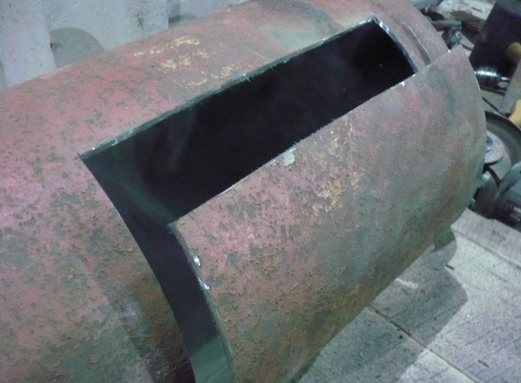

Shown how I cut a balloon
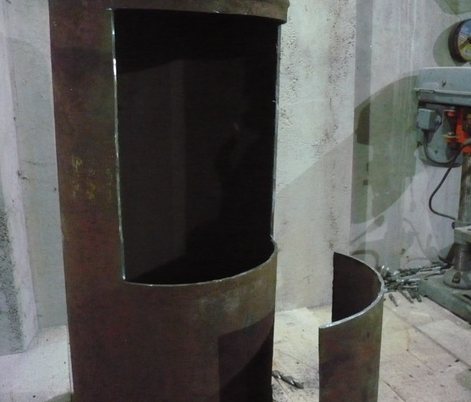

Shown how I cut a balloon
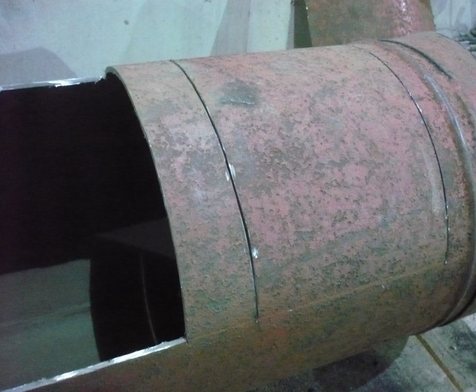

Shown how I cut a balloon
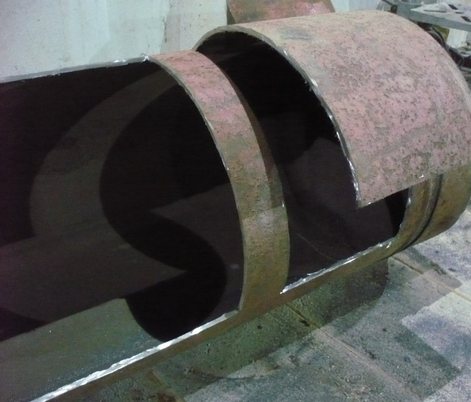

Shown how I cut a balloon
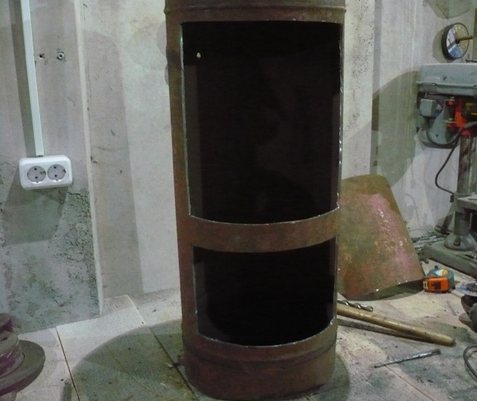

In the end, this is what happened
Then I once again rinsed the opened gas cylinder from gas condensate.
Fire safety requirements
The working furnace heats up and becomes fire hazardous, so you need to comply with the requirements for its installation and operation:
- The floor surface must be non-combustible. Concrete, ceramic tile, metal surfaces are allowed. The wooden floor near the stove is covered with metal.
- If the wall near which the stove is located is made of wood or other non-fire-resistant material, then it must be covered with an asbestos sheet.
- Drafts must not be allowed in the room where the stove is installed. Flames from the perforated pipe can spread to surrounding objects.
- It is forbidden to store any flammable materials near the oven.
- The mining stocks are stored in another room.
- Fuel must not be added there during the operation of the stove.
- In the room, you need to keep in a convenient place a powder or salt fire extinguisher.
Important. It is forbidden to extinguish burning waste oil with water. The fire will only intensify.
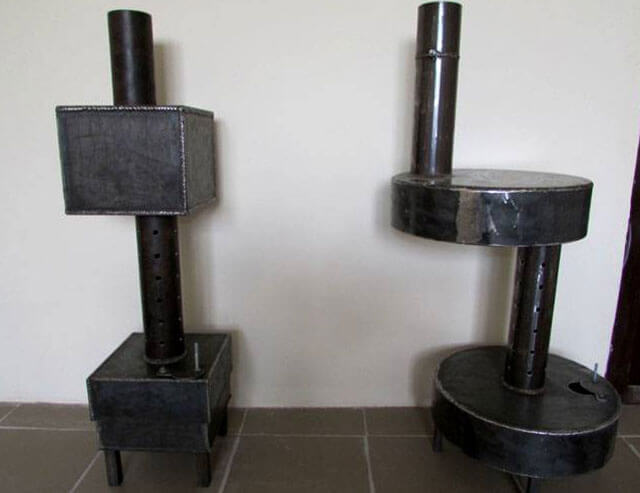

A working furnace is an economical and convenient heating unit, which, with proper operation and installation of the water circuit, will significantly improve the indoor climate and will be an irreplaceable source of heat in a garage or workshop.
Basic rules of operation and maintenance
To protect yourself when using a homemade stove, as well as extend the life of the structure, you must adhere to some rules:
- it is prohibited to fill the lower compartment with liquid fuel by more than 66 percent;
- to ignite, you must first ignite the paper sheet, and then lower it into the lower tank;
- the required operating mode is set by adjusting a special damper;
- during operation, it is not allowed to use other types of liquid fuel, the design is intended exclusively for testing;
- you cannot leave the fired up stove unattended for a long period of time;
- fastening the structure to the walls of the building and using high supports should be avoided;
- it is forbidden to place the oven directly under shelves or other objects that may fall;
- flammable substances should not be kept in the immediate vicinity of the heating device;
- the room in which the stove will be used must have good ventilation;
- water should not get into the oil, otherwise it will foam and slowly spill out;
- the contacting surfaces of the room must be made of non-combustible materials;
- cleaning the internal parts of the structure is allowed in any convenient way;
- there is no need to add fuel after firing up, the filled portion of the mining should completely burn out.
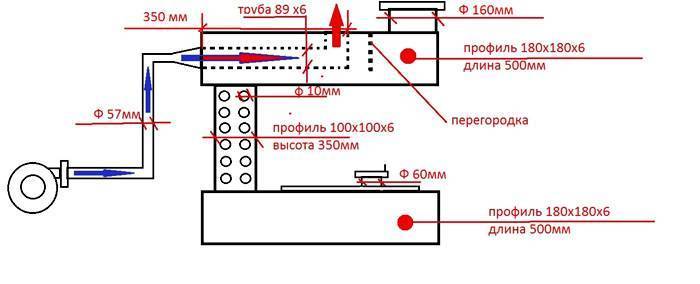

You should stick to about this size
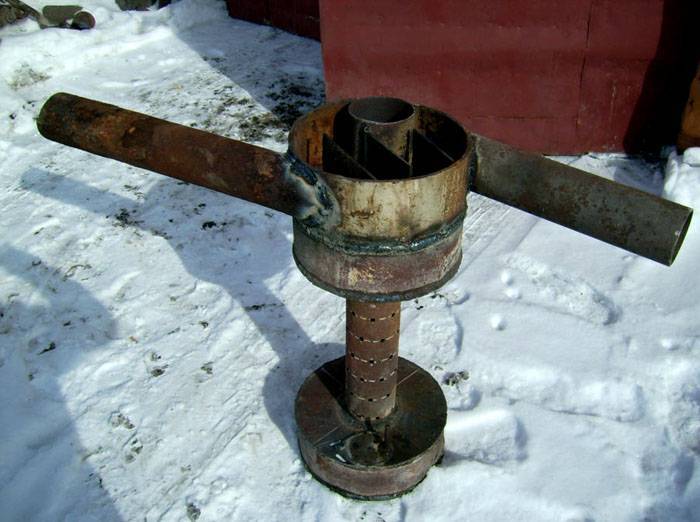

The structure must be cleaned regularly

